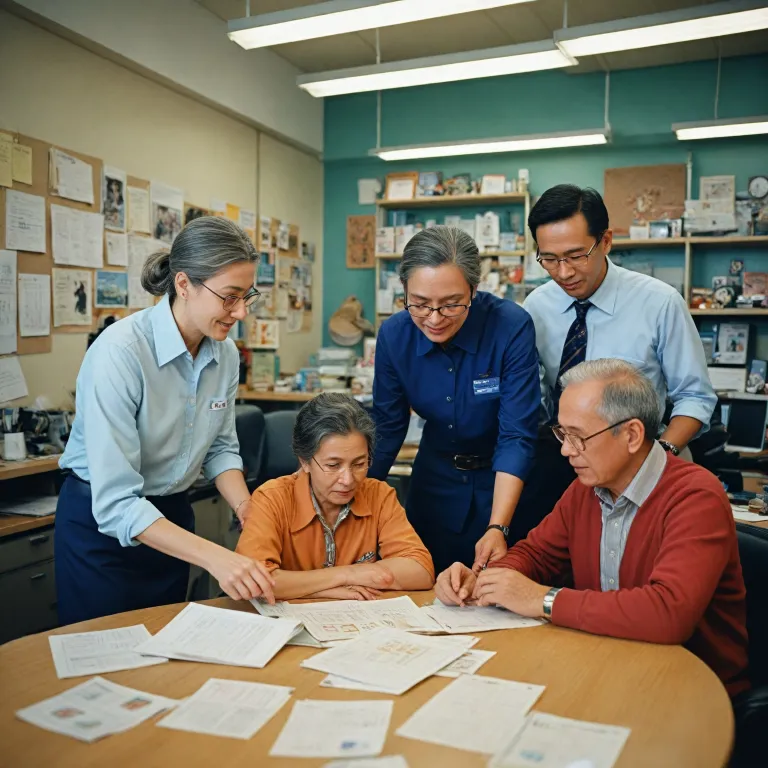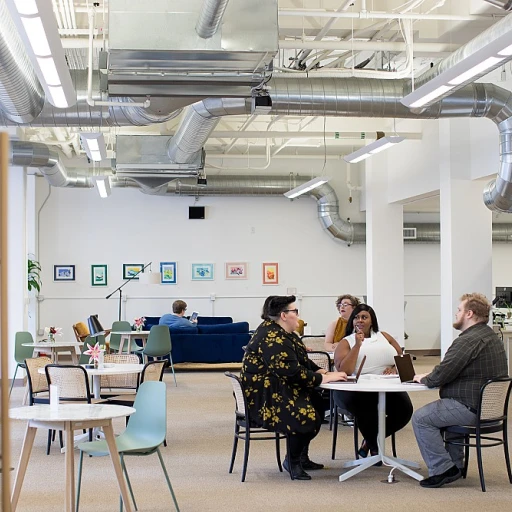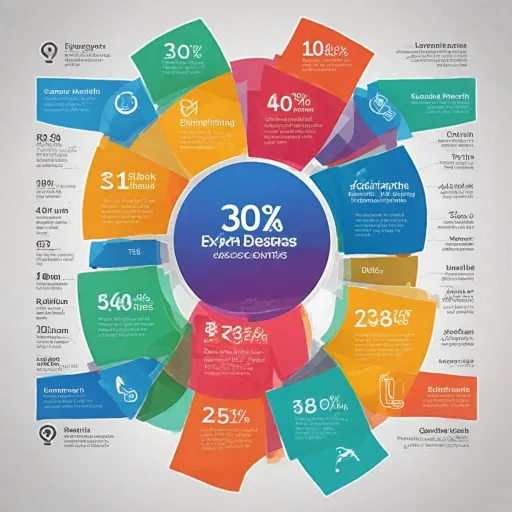Understanding Ageism in the Workplace
Defining the Challenge of Unequal Treatment Across Ages
Ageism in the workplace represents a pervasive challenge that comes with real impacts on job satisfaction, employee engagement, and company performance. At its core, ageism is the discrimination based on the age of employees or job applicants. It can manifest in a variety of ways, affecting older employees as well as younger workers, influencing workplace dynamics and morale.
The issue of age discrimination often stems from stereotypes about older workers, who may be unjustly perceived as less adaptable or slower to learn new skills. Conversely, younger workers may face assumptions of inexperience or a lack of commitment. Both young and old employees can face hurdles, ranging from reduced opportunities to outright exclusion, which can be exemplified by mandatory retirement policies or biased performance improvement plans.
Awareness of discrimination in employment has increased over recent years, leading to stronger calls for inclusivity and fairness in hiring and promotion practices. Recognizing these examples of ageism highlights not only a moral issue but can also be a compliance matter, as many jurisdictions enforce employment laws to protect against age discrimination.
Addressing ageism in the workplace involves a critical understanding of its signs and impacts. By fostering a workplace culture that values diverse age groups, companies can improve employee engagement and harness a wide range of experiences and perspectives. This awareness is vital for both employers and employees to dismantle age bias and work towards an inclusive work environment, embracing teamwork and enhancing company performance.
For those interested in exploring diversity and inclusivity in AI-driven human resources, the comparison of DEI vs MEI can offer further insights into promoting a balanced workplace approach.
Common Examples of Ageism in the Workplace
Recognizing Ageism in Daily Interactions
Ageism in the workplace often manifests in subtle, everyday interactions that can be easily overlooked. For instance, older employees might be excluded from team projects or social gatherings, under the assumption that they are not interested or capable of contributing effectively. This exclusion not only affects their job satisfaction but also their overall performance and engagement with the company.
Promotion and Career Advancement Barriers
Another common example of age discrimination is the barrier to career advancement opportunities. Employers may favor younger workers for promotions, believing they bring more energy or innovation to the role. This bias can leave older workers feeling undervalued and stuck in their current positions, despite their experience and contributions. Such practices can lead to a toxic work environment and decreased employee morale.
Mandatory Retirement and Health Assumptions
Mandatory retirement policies can also be a form of age discrimination, forcing older employees to leave the workforce based solely on their age rather than their ability to perform. Additionally, assumptions about an older worker's health or ability to adapt to new technologies can lead to unfair treatment and exclusion from training or development programs.
Performance Improvement Plans and Age Bias
Performance improvement plans (PIPs) can sometimes be used discriminatorily against older employees. When these plans are based on age-related stereotypes rather than actual performance metrics, they can unfairly target older workers, pushing them out of the company. Employers must ensure that PIPs are applied consistently and fairly across all age groups to avoid age bias.
Understanding these signs of ageism is crucial for creating a more inclusive workplace. By addressing these issues, companies can foster a more equitable environment that values the contributions of all employees, regardless of age. For more insights on fostering inclusivity and trust in the workplace, consider embracing trust-based time off with AI.
The Role of AI in Detecting Ageism
The Power of AI in Uncovering Age-Related Discrimination
Artificial intelligence is making a significant impact in various sectors, particularly in identifying and combating ageism in the workplace. Employers can leverage AI to uncover subtle signs of discrimination based on age, which helps in ensuring a fair and inclusive environment for both younger workers and older employees.
AI tools can help in analyzing patterns that might indicate age bias. For example, discrepancies in promotion rates, performance improvement plans, or opportunities provided to younger employees compared to older workers can be detected with the help of AI-driven analytics. These insights can lead to informed decisions for creating better employment practices that eliminate discrimination related to age.
Benefits and Implementation
- Data-Driven Insights: AI can parse through vast amounts of employment data to highlight discrepancies where age bias exists, for instance, in hiring practices or job satisfaction ratings.
- Detecting Bias: With natural language processing, AI can scan communications and documents for biased language, an effective way to identify subtle discrimination against older employees before it escalates.
- Performance Analyses: AI tools provide metrics that help gauge whether age is affecting performance reviews negatively, thereby fostering a workplace devoid of ageism workplace issues.
- Ensuring Compliance: By adhering to employment law, AI solutions can automate checks for discrimination tagged to legal employment requirements, minimizing the risk of legal repercussions for the company.
For more information on how AI is transforming HR practices, including talent management and promoting inclusivity, check out this
comprehensive guide on revolutionizing talent management systems with AI.
These AI capabilities don't just enhance detection of ageism—they support a proactive approach to create equitable work environments. Using AI ethically and effectively allows companies to ensure all team members can thrive without the shadow of age discrimination hanging over their employment paths.
AI Tools Enhancing Inclusivity in the Workplace
Integrating artificial intelligence into human resources offers promising possibilities for promoting inclusivity and addressing age discrimination. As ageism in the workplace remains a challenge for many organizations, AI tools are increasingly being utilized to recognize and mitigate biases in employment and performance evaluation processes.
AI solutions can play a transformative role in ensuring that hiring and management practices remain unbiased and fair towards both older employees and their younger counterparts. By analyzing vast amounts of data, AI technologies can identify patterns of age discrimination that may not be apparent on the surface. This allows employers to take proactive steps in addressing workplace disparities and enhancing employee engagement.
One practical application of AI in fostering a more inclusive work environment involves using algorithms to assess job performance objectively. This ensures that employees are evaluated solely based on their contributions, without the hidden impact of age bias. Furthermore, AI-driven performance improvement plans aid in providing personalized growth opportunities for team members, regardless of age.
Another significant benefit of employing AI tools is their capability to eliminate age-related language in job postings. Crafting language-neutral job advertisements helps in attracting a diverse pool of candidates, resulting in age-diverse teams. Such inclusivity does not only adhere to employment law but also enriches the work culture and boosts job satisfaction across the board.
While AI offers exciting prospects, it is vital for companies to be mindful of the ethical implications and challenges associated with AI usage. The focus should be on developing solutions that are free from biases and that uphold the principles of fairness and equity in the workplace.
To address these issues effectively and create a discrimination-free workplace, companies must prioritize continuous learning and improvement, ensuring AI tools are updated and aligned with ethical standards.
Challenges and Ethical Considerations
Overcoming Challenges and Navigating Ethical Concerns
When tackling ageism in the workplace with artificial intelligence, companies must contend with unique challenges and ethical considerations.
One significant issue is bias in AI algorithms. If not carefully managed, these systems may inadvertently perpetuate age discrimination, undermining efforts to create an inclusive work environment. This risk highlights the importance of designing AI tools that are rigorously tested for neutrality, ensuring they do not favor younger workers over older employees or discriminate based on age.
Transparency is another key concern. Employers must ensure that AI-based decision-making processes in employment and performance evaluations are clear and comprehensible to all employees. This approach fosters trust and allows both older workers and younger employees to understand how decisions affecting their employment are made.
Data privacy remains a crucial factor. Confidentiality must be safeguarded when collecting and analyzing employee information to avoid any potential breaches that could violate employment law or employee rights.
Moreover, companies need to cultivate a balance between leveraging AI for performance improvement and maintaining a human touch in employee engagement. While AI can analyze signs of age bias effectively, interaction with human managers often provides the empathy and understanding necessary to resolve ageism workplace issues and improve job satisfaction.
Lastly, businesses must consider the potential financial implications of implementing AI solutions and develop an improvement plan that aligns with organizational goals, ensuring that inclusivity efforts do not inadvertently lead to mandatory retirement or reduced opportunities for older employees. Understanding these challenges and addressing them head-on can pave the way for a more equitable employment landscape.
Future Trends in AI and HR
Anticipating the Evolution of Artificial Intelligence in Human Resources
The integration of artificial intelligence in the workplace is set to radically transform traditional human resources practices, especially regarding discrimination based on age and fostering a more inclusive environment. The future trends in AI and HR hold promising prospects for a fairer and more efficient workplace, though not without challenges.
Artificial intelligence has the potential to revolutionize how employers approach both recruitment and retention by eliminating age bias. Automated systems can help to counter ageism, ensuring that recruitment and performance appraisals are objective, thus reducing discrimination against older employees and promoting opportunities for both younger and older workers. However, employers must be mindful that reliance on AI does not inadvertently reinforce ageist stereotypes.
Enhanced AI algorithms will continue to improve in identifying age discrimination, helping to foster a healthier work culture. As AI tools evolve, they will be better equipped to identify underrepresented voices, giving both younger and older employees equal chances of being heard. This development is crucial for both employee engagement and job satisfaction.
Understanding legal aspects, such as employment law, is crucial for future developments. The collaboration between HR professionals and AI systems presents a tremendous opportunity for performance improvement plans that are free from age discrimination. However, companies must remain vigilant about the ethical considerations and subtleties found in ageism within workplace dynamics, ensuring compliance with the law and promoting overall workplace health.
As we look forward, it is clear that AI will play a pivotal role in reshaping HR strategies and practices. Employers and HR teams must stay informed and adaptable to leverage AI effectively and ethically, embracing this technology to drive an agile and inclusive workforce that values all ages for their unique contributions.













